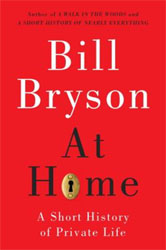Tagline: The first game designed by Richard Garfield and released to the public, RoboRally shows the intriguing conceptual ideas and addictive game play which have since become Garfield’s stock in trade. Like so many games released by Wizards of the Coast I first picked this product up because the description just sounded too intriguing to miss. Like every product I have ever picked up from the Wizards, I was anything but disappointed.
“Like every product I have ever picked up from the Wizards, I was anything but disappointed.” Ah, 1998. How I miss ye. RoboRally remains one of my favorite games. Unfortunately, my original copy was lost in a move and later turned up in the bottom of a box that was being stored in a pole barn. Although sadly water-damaged, it is still tremendous fun. Anyone know what Richard Garfield is up to these days?
GAME CONCEPT
 In the future the widget factories of the world are controlled by the mightiest artificial intelligences ever created by man. Capable of solving any problem which might arise and controlling the entire factory from top to bottom to compensate for any problems and keep production right on schedule, these mighty machines suffered from only a single problem: Boredom.
In the future the widget factories of the world are controlled by the mightiest artificial intelligences ever created by man. Capable of solving any problem which might arise and controlling the entire factory from top to bottom to compensate for any problems and keep production right on schedule, these mighty machines suffered from only a single problem: Boredom.
Then one day a processing robot fried a circuit and went careening onto a conveyor belt, which sent him spinning through the high-powered laser systems and dropped him off just in time for his broken and decaying programming databanks to send him plummeting down a bottomless disposal bit on the factory floor.
The computers were … amused.
Immediately they created the game of RoboRally – each computer controlled a single robot and, using a limited set of data registers, was required to send the robots through a specially converted section of the factory floor.
In the boardgame RoboRally you are the computer, programming your robot to cross the factory floor and reach a set of checkpoints in a specific sequence in order to win the game. In your way are conveyor belts, bottomless pits, gears, crushers, pushers, and laser beams… not to mention the robots of your fellow players.
RULES
The game comes with six gameboards which can be played individually or arranged in any combination you want. The checkpoints you must reach are represented by six counters numbered from 1 to 6 – you can place these counters anywhere on the gameboards you want and in any order you choose. The options are practically infinite.
On each turn you are dealt nine program cards. From these you must select five cards and “program” your robot by assigning one card to each of five programming registers. When all the players have completed programming their robots the turn begins – each register is considered in order and your robot moves.
This sounds simple, but in truth you’ll find yourself making bonehead mistakes – especially when you come in contact with the board elements. “Okay, first I’ll move forward, which will put me on the conveyor belt which will move me there, then I’ll turn left, and the conveyor belt will move me again, turning me as I go, so that when I move backwards on the next phase I’ll end up…” And, of course, you can always be pushed around by the other robots on the board so that your preciously planned sequence of movements will suddenly all be off by one square … and the results cascade through the rest of the turn.
Plus, your robot can take damage and be destroyed by various game elements on the board. Plus, your robot and the robots of the other players are all outfitted with lasers – allowing you to whittle away. What can be worse than getting blasted out of existence and having to start over from the beginning (there is also a way of “archiving” a copy of your robot at certain waypoints on the board)? Well, as you take damage the number of program cards you dealt to select from are decreased. If you take enough damage some of your robot’s programming registers may become locked – meaning that the cards you have assigned to those registers will have to stay the same until you can get your robot repaired.
Finally there are ways of retrofitting your robot with special abilities.
STRENGTHS
This game is a tremendous amount of fun. If you’ve ever played Paranoia and gotten great laughs out of watching your characters getting fried you’ll already understand the appeal this game carries with it – nothing is more hilarious then when one of your fellow players suddenly groans, “Oh nooooo…” and you know he’s made a mistake in his plans and his robot is about to go cascading off-course and into jeopardy.
The game is beautifully designed by Phil Foglio – the cover illustration of a ZIP 550 looking nervously over his shoulder as he enters the factory is absolutely perfect at setting the tone of the game. Foglio also designed the miniatures which come with the game.
WEAKNESSES
The learning curve is pretty simple, but there are some rules which could so with better explanation. Wizards of the Coast has posted the complete rules and a FAQ at their website, and from what I’ve seen they have not fixed these problems.
The confusion over these rules is quickly eliminated however by some practical familiarity with the game. Play your first game on a single board and establish up front that rule interpretations could fluctuate wildly during the course of the game as you figure out some of the nuances.
There are several handy reference sheets and the rulebook is laid out in such a fashion that information is easy to find when you need it. This is not an overwhelming problem, merely one of having to play the game first before you can see what some rules mean.
CONCLUSION
This game is great. The idea is great, the carry-through is great, the rules are great, the entertainment value is great. You simply can’t go wrong.
There are also several expansion sets for the game (Armed and Dangerous, Grand Prix, and (coming later in 1998) Radioactive). I hope to own and review both these and the second make of this game in the near future here on RPGNet.
Style: 5 (Excellent!)
Substance: 5 (Excellent!)
Author: Richard Garfield
Company/Publisher: Wizards of the Coast
Cost: $34.95
Page count: n/a
ISBN: 1-57530-088-5
Originally Published: 1998/06/19
[ This is a review of the first make of the RoboRally game. The second make of the game (which I do not yet own), slightly altered the lay-out of the rules and changed the design of the miniatures included with the game. However, to my knowledge, game play was not affected to any serious degree. The ISBN product code above refers to the second make of RoboRally, as that is the one which you can still order from Wizards of the Coast. ]
For an explanation of where these reviews came from and why you can no longer find them at RPGNet, click here.














